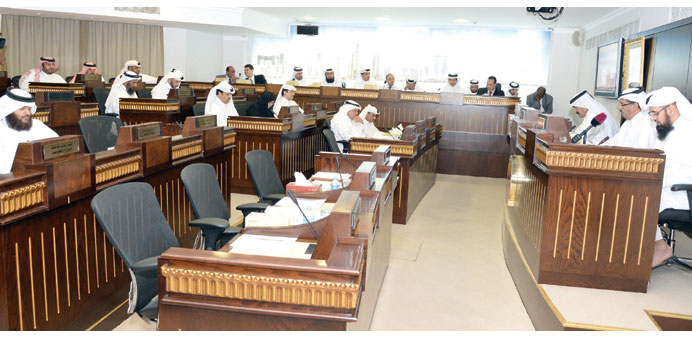|
Public hospitals should devise a strategy to mitigate the undesired consequences of overcrowding in its patient reception areas to avoid any potential spread of contagious or seasonal diseases, members of the Central Municipal Council (CMC) urged yesterday. |
“The design of public hospitals should be modified to allow a separation between the reception area for patients and the waiting areas of patients, who sometimes crowd the place for many hours, increasing the chances of spreading diseases among themselves as well as new clients of the hospital,” said Hamad Lahdan al-Muhannadi, CMC member.
“For instance, in the reception area of Al Khor hospital, there are scores of waiting expatriate workers who spend hours in a closed area together, waiting for their turn to see a doctor. This can be a good environment for spreading diseases rather than treating people,” he added.
The council hosted yesterday senior officials from the Supreme Council of Health (SCH), including Dr Mohamed al-Hajiri, director
of Health Protection and Communicable Diseases, and Dr Hamad Eid al-Rumaihi, head of the Communicable Diseases Control Department, besides officials from the Ministry
of Environment, including Farhud al-Hajiri, director of the Animal Wealth Division.
They discussed with CMC members the measures and precautions taken by the authorities concerned to control and monitor the Middle East Respiratory Syndrome - Coronavirus ((Mers-CoV) and curb any potential spread of the disease in the country.
CMC chairman Saud al-Hinzab stressed that health officials should adopt a transparent strategy for updating people with the facts about such diseases and their development instantly to avoid the spread of rumours.
CMC vice-chairman Jassim al-Malki demanded that there should be greater focus on public awareness efforts and provision of proper equipment for emergency departments at hospitals, which need to be equipped with the adequate number of beds and rooms to deal with potential cases.
Dr al-Rumaihi stressed that Qatar has communicated with the World Health Organisation (WHO) since Mers was first identified in 2002. Further, SCH has had considerable achievements in this through the isolation of Mers-CoV from a dromedary camel in Qatar and the conduct of a national survey on the spread of the disease. He said there have been only nine cases identified with the disease so far in the country, with five deaths.
He pointed out that the challenges involved included the non-availability of sufficient information on the virus; so, Qatar collaborated with international scientific research laboratories to identify cases because commercial labs could not perform the required tests. Further, SCH complied with all the recommendations of WHO in this regard and worked with them closely to take all the necessary measures.
Meanwhile, Dr al-Hajiri said the Communicable Diseases building, located near the Heart Hospital, is scheduled to be ready by 2015 and will have 50 beds.
During yesterday’s CMC bi-weekly regular session, the council reviewed the responses of HE the Minister of Municipality and Urban Planning to some of its previous recommendations. These include co-ordination between the Ministry of Municipality and Urban Planning (MMUP) and the Public Works Authority (Ashghal) to tackle issues of high levels of groundwater and sewage projects, control of advertisements on windows of commercial outlets, specifications for private schools in residential areas and a decision regarding the determination of areas where commercial and industrial outlets are authorised.
The CMC also reviewed the response regarding its recommendations on the mechanism that should be adopted by the MMUP in allowing locals to buy excess pieces of land adjacent to their houses.
The council saw that the MMUP response was comprehensive and said it would follow up on updates about related issues with the bodies concerned.



